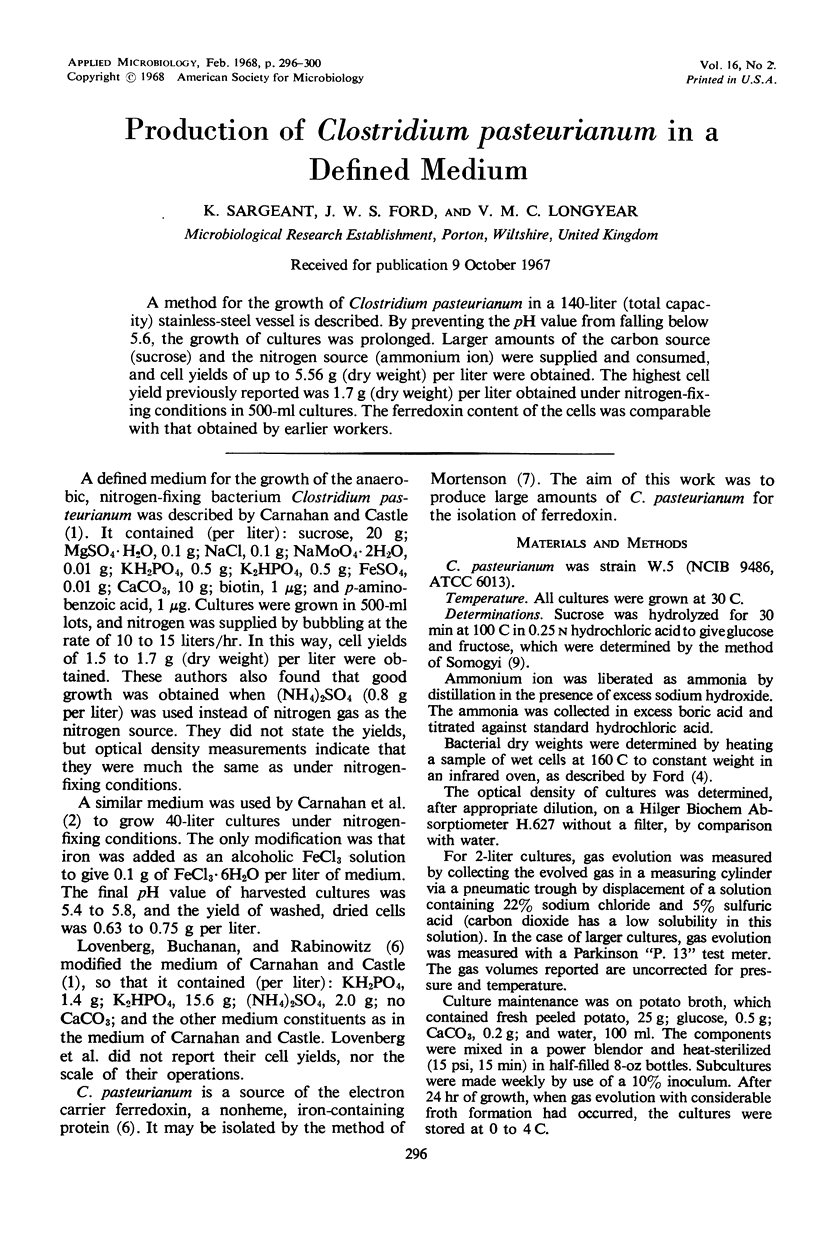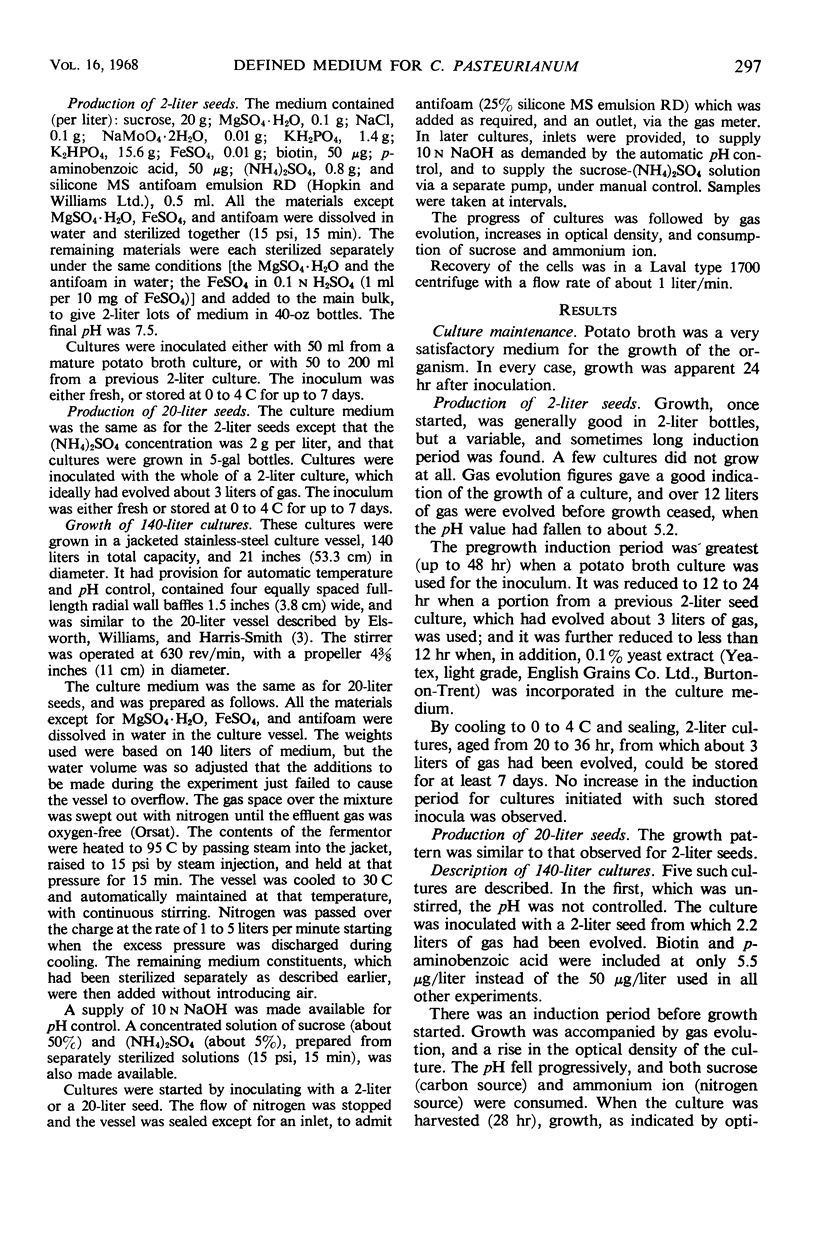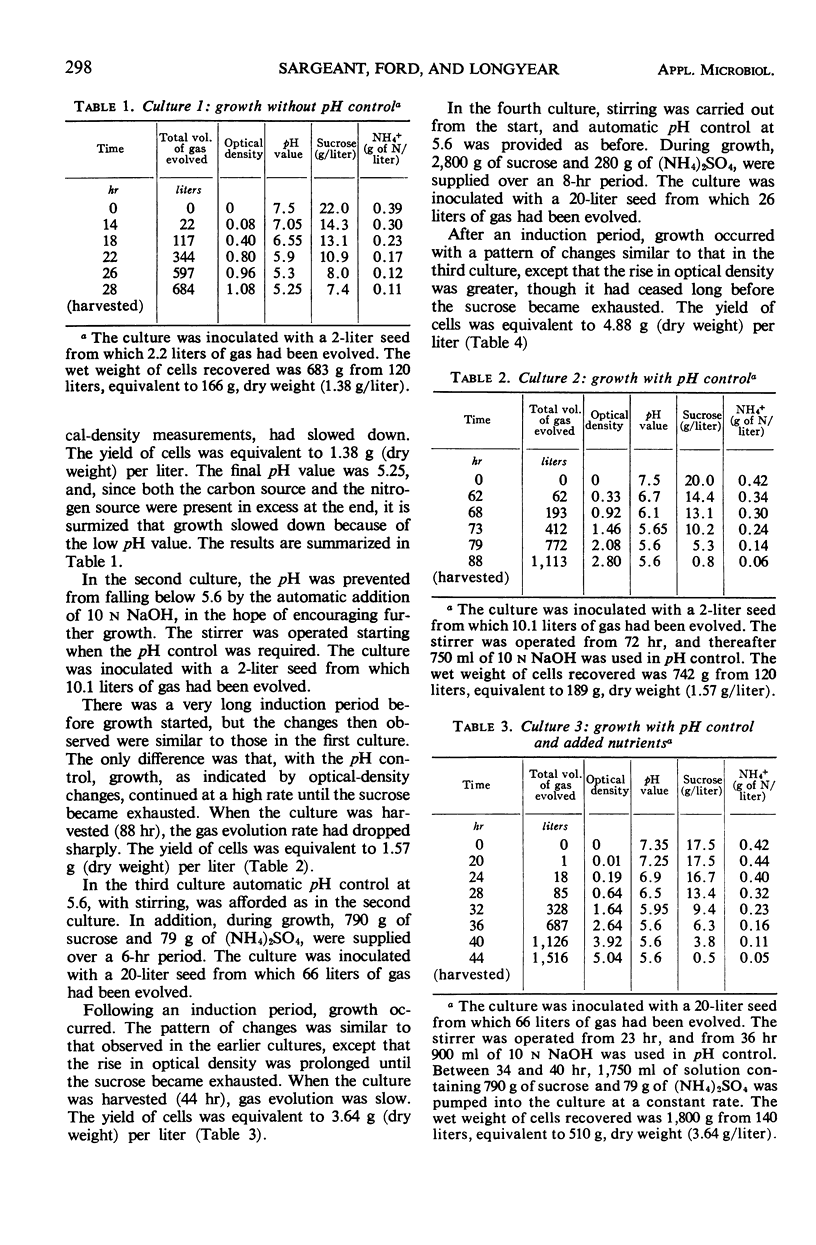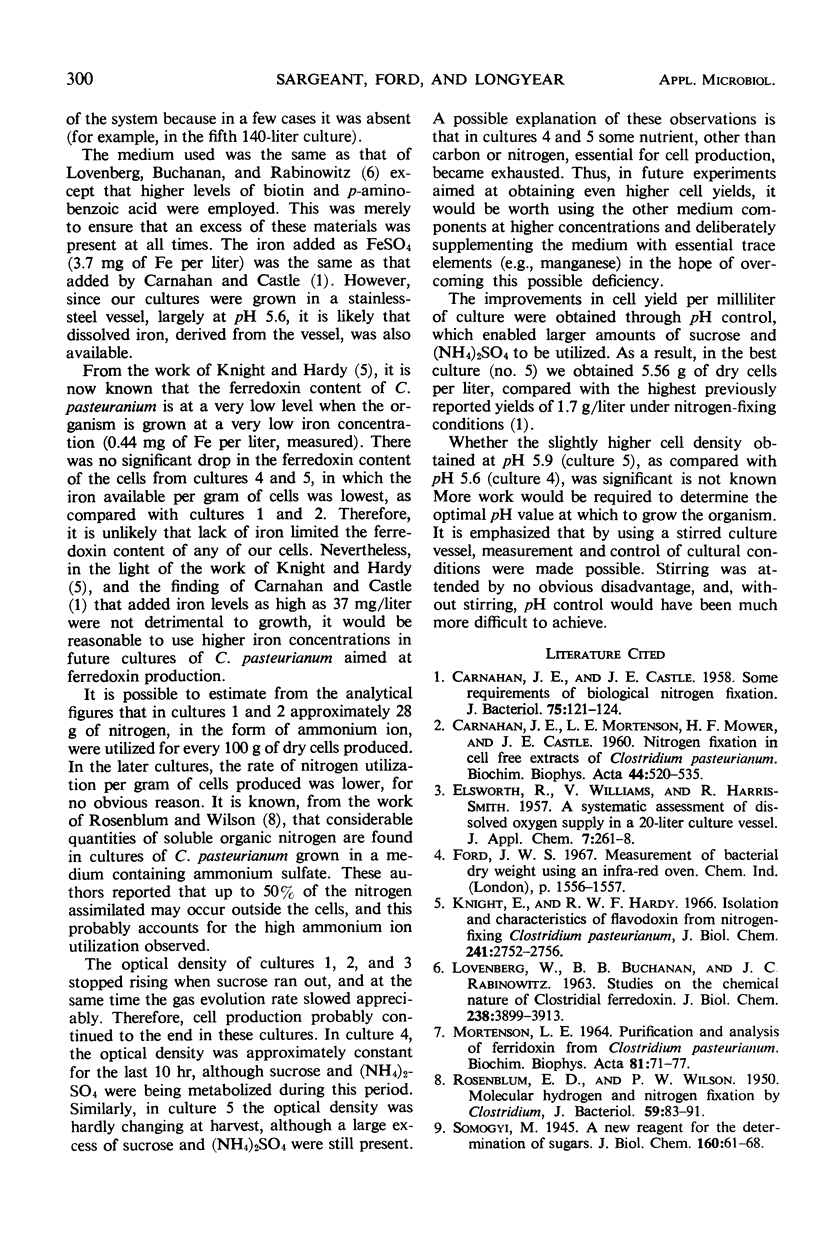Abstract
A method for the growth of Clostridium pasteurianum in a 140-liter (total capacity) stainless-steel vessel is described. By preventing the pH value from falling below 5.6, the growth of cultures was prolonged. Larger amounts of the carbon source (sucrose) and the nitrogen source (ammonium ion) were supplied and consumed, and cell yields of up to 5.56 g (dry weight) per liter were obtained. The highest cell yield previously reported was 1.7 g (dry weight) per liter obtained under nitrogen-fixing conditions in 500-ml cultures. The ferredoxin content of the cells was comparable with that obtained by earlier workers.
Full text
PDF




Selected References
These references are in PubMed. This may not be the complete list of references from this article.
- CARNAHAN J. E., CASTLE J. E. Some requirements of biological nitrogen fixation. J Bacteriol. 1958 Feb;75(2):121–124. doi: 10.1128/jb.75.2.121-124.1958. [DOI] [PMC free article] [PubMed] [Google Scholar]
- CARNAHAN J. E., MORTENSON L. E., MOWER H. F., CASTLE J. E. Nitrogen fixation in cell-free extracts of Clostridium pasteurianum. Biochim Biophys Acta. 1960 Nov 18;44:520–535. doi: 10.1016/0006-3002(60)91606-1. [DOI] [PubMed] [Google Scholar]
- Knight E., Jr, Hardy R. W. Isolation and characteristics of flavodoxin from nitrogen-fixing Clostridium pasteurianum. J Biol Chem. 1966 Jun 25;241(12):2752–2756. [PubMed] [Google Scholar]
- LOVENBERG W., BUCHANAN B. B., RABINOWITZ J. C. STUDIES ON THE CHEMICAL NATURE OF CLOSTRIDIAL FERREDOXIN. J Biol Chem. 1963 Dec;238:3899–3913. [PubMed] [Google Scholar]
- ROSENBLUM E. D., WILSON P. W. Molecular hydrogen and nitrogen fixation by Clostridium. J Bacteriol. 1950 Jan;59(1):83–91. doi: 10.1128/jb.59.1.83-91.1950. [DOI] [PMC free article] [PubMed] [Google Scholar]


